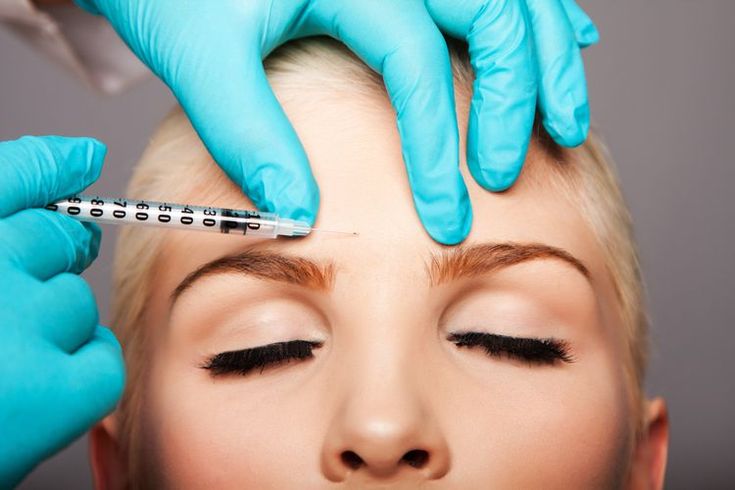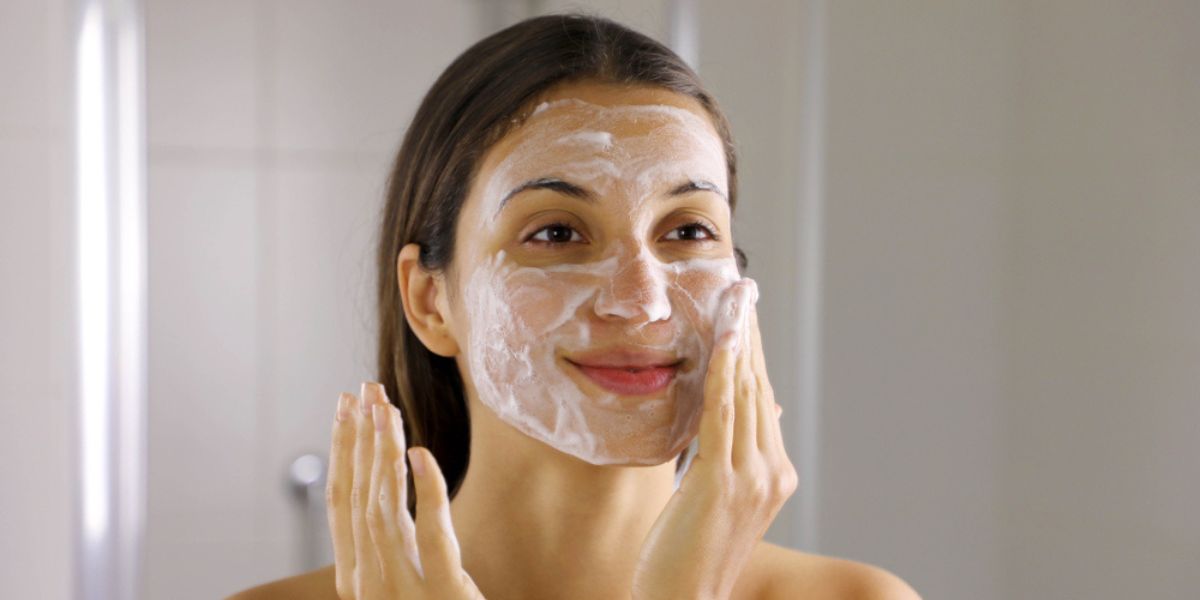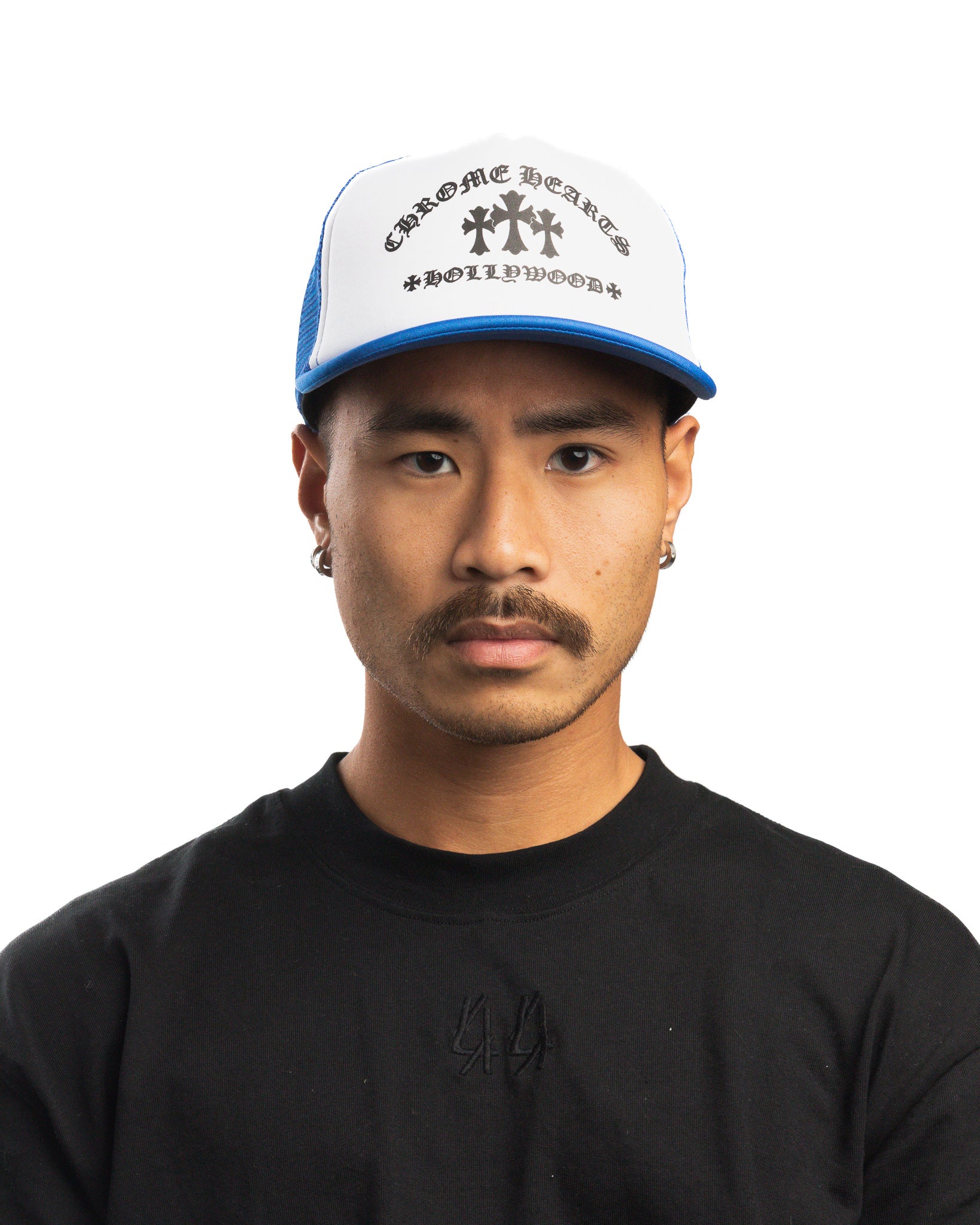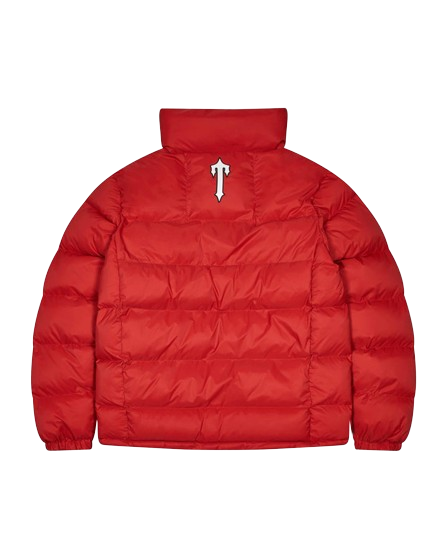Ever since the FDA approval of Botox in the 1980s, people everywhere have been obsesse with injectables to cheat the aging process—aesthetically, at least. Botox is a neurotoxin that temporarily prevents the communication between your nerves and your muscles, explains dermatologist Mara Weinstein, MD. In other words, Botox paralyzes the injected muscle, usually for a period of three to six months.1 Therefore, if you try to frown, you won’t be able to, which is not a bad thing, says Weinstein. She adds that regular treatments with the neurotoxin have been shown to enhance mood and fight depression.2
For anti-aging purposes specifically, doctors use Botox to treat two types of wrinkles: static and dynamic. Static lines are the deep wrinkles that are etched into people’s faces after several decades of frowning, smiling, and raising their eyebrows, while dynamic wrinkles are only visible as you’re making a facial expression. The goal of treatment is to prevent the formation of static lines altogether, Weinstein says. However, if you already have static lines, regular treatments with neurotoxin (and filler) can certainly soften the appearance and in some cases, eliminate them in the long run.
Here’s the thing: Because the drug has only been around for 30 years, there’s not much to glean when it comes to the long-term effects of Botox. To find answers, we consulted top dermatologists.
Here are eight things you should know about Botox injections and how they impact your body.
Botox Trains Your Muscles
After using Botox continuously for years, your muscles will become trained not to make wrinkle-forming expressions as aggressively. Weinstein says, Once you are using to the feeling of having less movement in the forehead after neurotoxin, you will be more aware of making the movement when the toxin wears off.
For anti-aging purposes specifically, doctors use Botox to treat two types of wrinkles: static and dynamic. Static lines are the deep wrinkles that are etch into people’s faces after several decades of frowning, smiling, and raising their eyebrows, while dynamic wrinkles are only visible as you’re making a facial expression. The goal of treatment is to prevent the formation of static lines altogether, Weinstein says. However, if you already have static lines, regular treatments with neurotoxin (and filler) can certainly soften the appearance and in some cases, eliminate them in the long run.”
Botox Weakens the Muscles
If you didn’t move your legs for 20 years, eventually those muscles would shrink and become quite weak. The same thing can happen to the muscles in your face: “If used regularly, over a prolonged period, without interruption, eventually the muscle will atrophy from lack of use,” says the legendary dermatological surgeon Patricia Wexler, MD. That’s not to say your entire face will atrophy. “As the Botox is injecte in discrete locations on the face, eventually only those treat muscles will atrophy, leaving other muscles to maintain full volume,” Wexler notes.
So, no, your face isn’t going to look stone-cold, according to Michele Farber, MD, of Schweiger Dermatology Group in New York City. “There are plenty of muscles that are working full time to allow for normal facial expression.” She adds, “If given a break from , muscles will regain strength.” she says.
Botox Might Make Skin Visibly Thinner
Wexler says that some patients complain of a visible thinning of the skin after many years of Botox use. This might mean exposure of subdermal veins between areas of normal thickness. This isn’t common, but Wexler says that patients who start Botox “too early,” like in their early 20s, can be at risk for this side effect. In these cases, “The skin of the forehead [can] get prematurely thinner, and the muscles weaker,” she says. Sometimes, after many years of use, this can even result in the look of heavier brows and eyelids, “making the toxin more difficult to continue using.”
“Discussing a proper skin regimen and integrating daily sunscreen can reduce this risk,” Farber says.
Botox Could Result in Mild Discoloration or Texture
Again, not typical, but Wexler says that with the skin thinning, some patients notice “a visible waviness of the skin overlying the muscles treated,” as well as discoloration. “On expression, the forehead may even appear like hills and valleys,” she says.
“Many people fear that their faces will become dramatically wrinkled when they stop Botox. If you choose not to continue, those muscles staying out of use while Botox is active can delay the aging process; it reduces movement when injected, slowing the formation of wrinkles,” Farber explains.
You May Need Less Botox Over Time
Years of Botox use may mean you’ll need less and less maintenance over time. “With appropriate frequency and amount, your muscles become less strong and you may not need as much Botox or need it as frequently,” Farber says. “When your muscles are ‘trained’ not to move, it helps with the aging process and preventing wrinkles.”
The Effects Will Last After You Stop
“Many people fear that their faces will become dramatically wrinkled when they stop Botox. If you choose not to continue, those muscles staying out of use while Botox is active can delay the aging process; it reduces movement when injected, slowing the formation of wrinkles,” Farber explains.
Long-Term Botox Brightens Skin and Decreases Wrinkles
Aside from what can happen after long-term use of Botox, one thing is for sure: “If you continuously get Botox for 10-plus years you will certainly look much younger and have fewer wrinkles,” promises Debra Jaliman, MD, a New York City-based dermatologist and author of Skin Rules: Trade Secrets from a Top New York Dermatologist. “Your skin will look much smoother and the appearance of fine lines and deep wrinkles will be greatly diminished.”
Is Baby Botox A Safer Alternative?
If commitment is keeping you from taking the first plunge into traditional, you could opt for a more natural alternative. Baby Botox, or Botox for newbies, is simply Botox injections administered in smaller doses. Cost-wise, there’s not much difference, but you’ll experience fewer side effects, and recovery time is minimal. The bottom line: Your best bet is to consult with a board-certified dermatologist before taking the full plunge.





